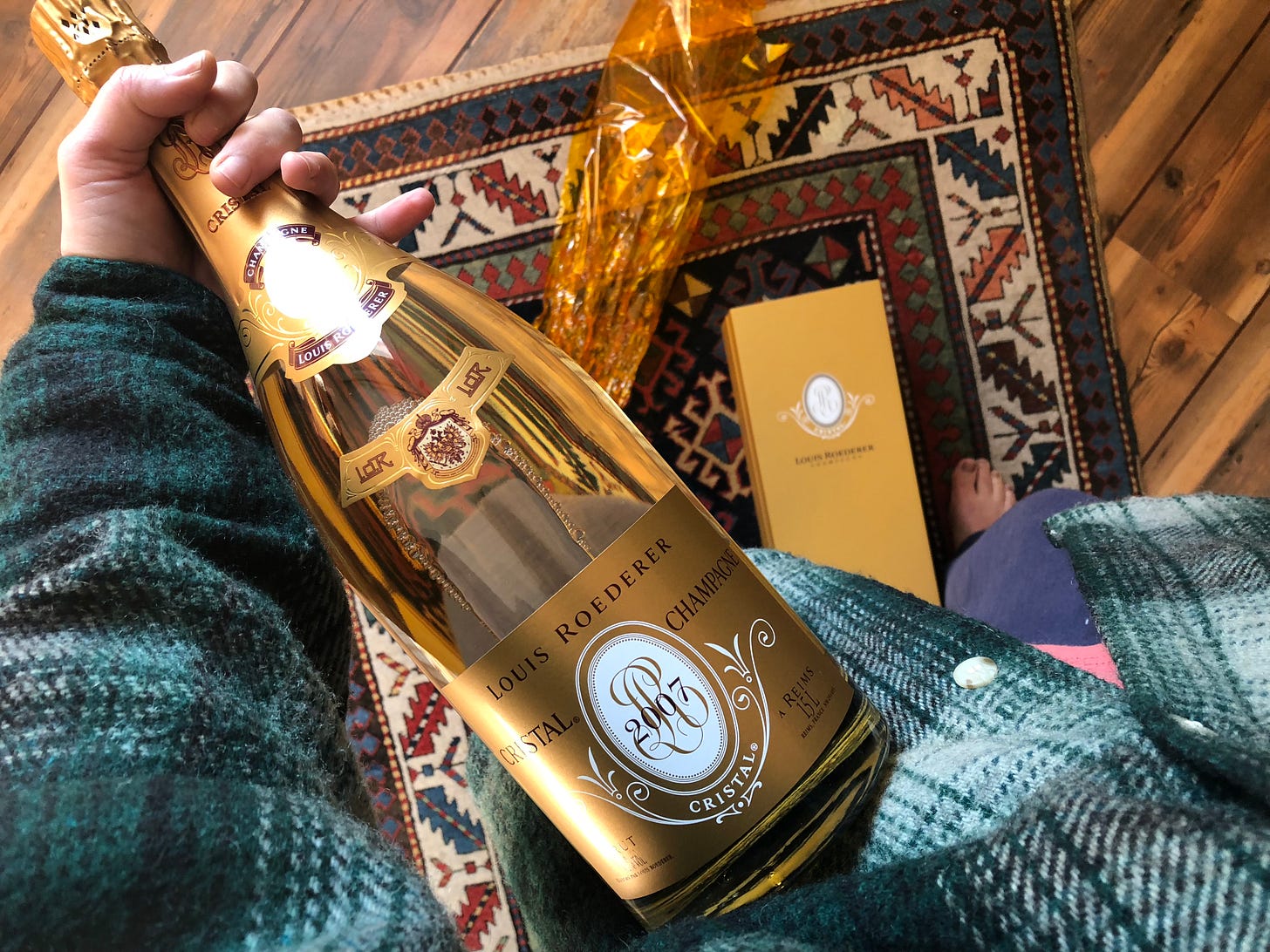Best served with yachts and caviar - Cristal 2007
Hannah wins a bottle of Roederer Cristal 2007. She and her friends put together a unique tasting note for the iconic wine.

There are two types of people in this world: those who think it’s no big deal to drink magnums of Cristal and those who do - like me, who promptly calls over friends, hands out paper and pens and says, “We’re going to take notes on this very expensive bottle of champagne I won. It’ll be fun!" Cristal, after all, is not made for us, none of us being stars, tsars, kings, psycho killers, club-owning rappers, knowledgeable about champagne or the stock market . And none of us will likely drink it again. To add insult to injury, we were also too hasty according to the experts: James Suckling suggests a drinking window with views reaching to the far side of 2022.
Here’s what else I learned. Cristal is not spelled ‘Crystal’ like I wrote in my notes, and comes wrapped in crackly orange foil in a satin-lined wooden box that goes clumpf when it shuts like an expensive car door. The colour theme is unrestrainedly gold. The cuvée was ‘composed’ by Louis Roederer on the commission of Tsar Alexander …
Keep reading with a 7-day free trial
Subscribe to The Morning Claret to keep reading this post and get 7 days of free access to the full post archives.




